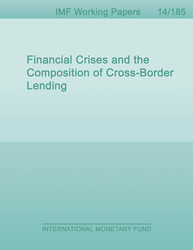
Financial Crises and the Composition of Cross-Border Lending
We examine the composition and drivers of cross-border bank lending between 1995 and 2012, distinguishing between syndicated and non-syndicated loans. We show that on-balance sheet syndicated loan exposures account for almost one third of total cross-border loan exposures during this period. Furthermore, syndicated loan exposures increased during the global financial crisis due to large drawdowns on credit lines extended before the crisis. Our empirical analysis of the drivers of cross-border loan exposures in a large bilateral dataset shows three main results. First, banks with lower levels of capital favor syndicated over other kinds of cross-border loans. Second, borrower country characteristics such as level of development, economic size, and capital account openness, are less important in driving syndicated than non-syndicated loan activity, suggesting a diversification motive for syndication. Third, information asymmetries between lender and borrower countries, which are important both in normal and crisis times, became more binding for both types of cross-border lending activity during the recent crisis.
Publication date: October 2014
ISBN: 9781484361443
$18.00
Add to Cart by clicking price of the language and format you'd like to purchase
Available Languages and Formats
| English |
Prices in red indicate formats that are not yet available but are forthcoming.
Topics covered in this book
This title contains information about the following subjects.
Click on a subject if you would like to see other titles with the same subjects.
Economics- Macroeconomics , Economics / General , International - Economics , cross-border banking , syndicated loans , global financial crisis , BIS international banking statistics , Dealogic Loan Analytics
Summary
Copyright © 2010 - 2024
Powered by:
AIDC



